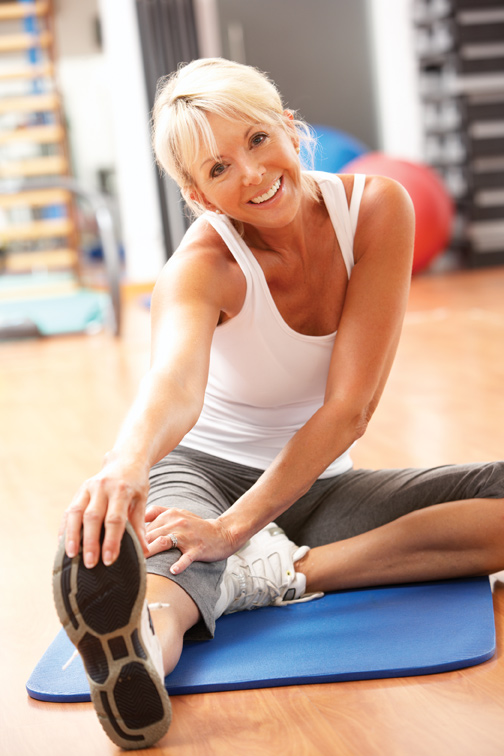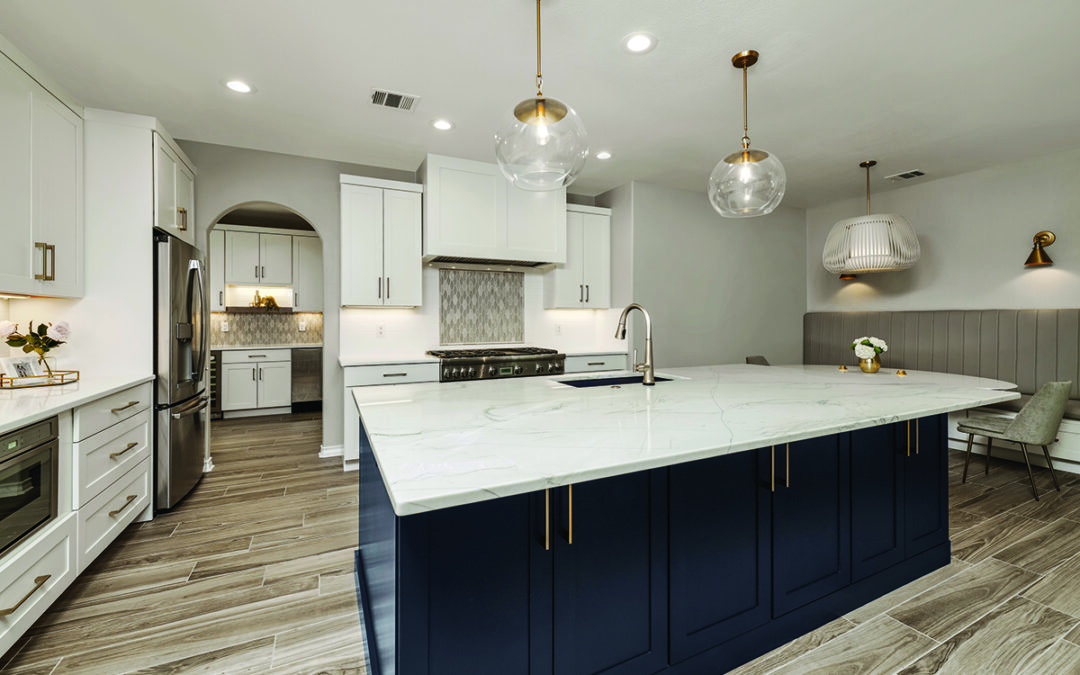If the little voice in your head is whispering, “New year, new you,” and the simple idea of going to gym makes you sweat, you’re far from alone. While a seemingly large number of people have a self-confessed fear of going to the gym, there’s no official word for it: Despite the spelling, “gymnophobia” is the fear of nudity, not the gym.
So why should you put “gym anxiety” in your rearview mirror and hit the gym anyway?
“Exercise is the best thing you can do for a positive mood boost, better sleep and stress management while losing some weight along the way,” explains Kathryn Scoblick, a certified health and wellness coach and author of Health Inspires: Your Way to Sustainable Weight Loss. “Once you get hooked, there will be no stopping you!”
Taking the initial step to start a workout routine is often the biggest hurdle, especially if you haven’t worked out in a while, or it’s never been part of your routine, explains Kim Folden, health and wellness director for the Thousand Oaks Family YMCA. “You have to be willing to make that lifestyle change. It’s OK to start at ground zero. If you don’t ever start, you’ll never get going. Taking that first step is the biggest challenge.”
Folden has heard every gym anxiety excuse in the book, but the most common one is the worry that gym “newbies” will stand out from the regulars.
“Every person who is in the gym that’s new, they think everyone is looking at them. They’re afraid of what other people think,” she explains. “But everyone is worried about themselves. No one is looking at you.”
She notes that there’s no right or wrong way to get into shape, but your chances for success are higher when you start doing an activity you enjoy. To jump-start a workout routine in the gym, Folden’s advice is to ease into it. “A lot of people think you have to commit to long, hard workouts every day. But you’ll get injured and burn out quickly,” she notes. “Start with something you enjoy and do it in moderation. If it’s something you like, you’re more likely to stick to it, and it will become a habit.”
Scoblick echoes the idea that a fitness regimen must become a habit to be successful.
“The right approach to a new workout routine is one that is sustainable over time and becomes a part of your lifestyle,” she explains. “The ‘all in’ intense approach to exercise is not sustainable and may cause burnout or injury from pushing yourself too hard too fast. You might start with walking a few days a week for 20-30 minutes, and build up to a longer walk, adding more days as you create your healthy habit.”
If it sounds odd that walking and other outdoor activities can help your gym routine, it’s not. “Mixing it up helps you stick with it. Getting outdoors to walk or hike, especially here in San Antonio, is a great way to add to your fitness routine. Just get out, get active, and get some fresh air,” explains Folden. “Getting in shape is a personal journey. It’s not the same for everyone. What you’re looking for is different — everyone has different lifestyles, routines and body types. Working out is not one size fits all.”
Folden suggests mixing things up in the gym as well. “Come into the gym, get on some cardio equipment, like a treadmill or cardio bike. Fifteen or 20 minutes is really all you need.
“You can join a group exercise class like yoga, step and rest or body pump classes, which feature cardio and strength training. Do that one or two days a week, then walk or stretch another day. That’s three days a week of working out, which is a good way to build your habit.”
Something to keep in mind as you explore the right fitness routine:
Strength training becomes more important as we age. “Up until about the age of 30, we are more easily able to keep and grow muscle mass. Somewhere in our 30s, and as part of the aging process, we lose muscle mass and function if we are not doing something to keep it,” explains Scoblick.
To ensure that you get the most out of a gym, its classes and equipment, Scoblick suggests working with a personal trainer.
“If you choose a gym membership, it will be worth your time to schedule a tour and/or a personal training session at the very least. You will learn how to use the equipment properly and prevent injury, reduce anxiety and promote familiarity with a structured workout routine that will get you on your way to better health.”
Folden agrees: “Never put a price tag on your health. Get a personal trainer. They’re good at meeting you at your fitness level and helping you reach your goals one step at a time.”
Another professional that both Folden and Scoblick recommend visiting before starting a gym routine: your doctor. “Putting your health first is always a good idea, and starting an exercise regimen is part of that healthy recipe. Consult with your physician before starting any new exercise program, especially if you are 50 years old or older,” explains Scoblick.
“Pre-existing medical conditions need to be considered,” notes Folden. “If you have a current injury, or one from the past, you should ask your doctor if there are specific exercises you shouldn’t do. The same goes for a heart condition or any medical issues. But if your doctor has no concerns, you can ease into a fitness routine with moderation.”
Moderation is a tough pill for many to swallow as they look to jump-start a fitness routine. “You have to give yourself time. Everyone wants instant gratification, but that doesn’t happen. It’s going to be a journey. And it’s OK to have bumps along the way. Just start your journey and get it going,” explains Folden.
By Dawn Robinette










0 Comments
Trackbacks/Pingbacks